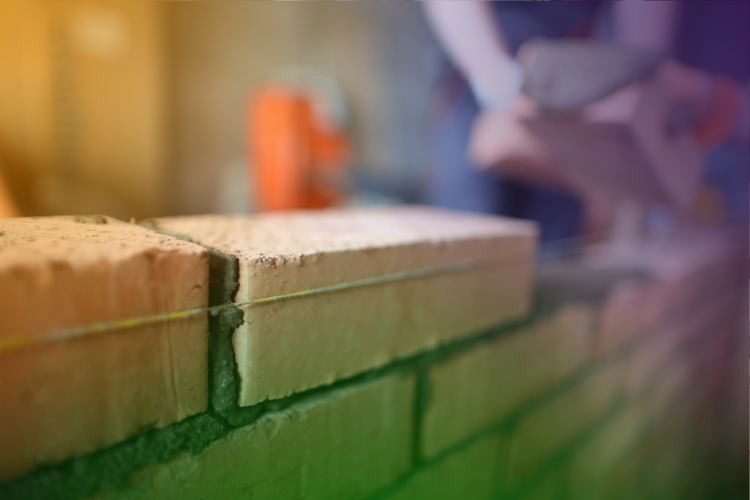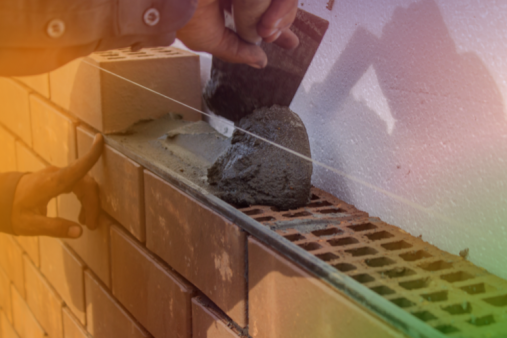Navigating the world of construction can be daunting, whether you're a homeowner embarking on a renovation or a professional in the building trade. With so many specific terms and phrases used daily on building sites, having a solid understanding of this language is essential.
To help you make sense of it all, we've created a comprehensive A-Z building glossary.. This guide will break down the key terms and concepts, from aggregates to zoning, ensuring you have the knowledge needed to communicate effectively and make informed decisions. Dive into our glossary and become well-versed in the essential vocabulary that underpins the building industry.
A
- Aggregate: Materials such as sand, gravel, or crushed stone mixed with cement to make concrete.
- Airbrick: A brick with holes designed to provide ventilation.
- Asbestos: A hazardous material once used for insulation and fireproofing.
- Architrave: The moulding around a door or window frame.
- Ashlar: Finely dressed stone, laid in regular courses.
- Attic: The space or room just below the roof of a building.
- Awning: A secondary covering attached to the exterior wall of a building, typically above a window or door.
B
- Balustrade: A railing supported by balusters, especially on a balcony or terrace.
- Beam: A horizontal structural element that supports weight.
- Bi-fold Door: A door that folds in sections along a track.
- Bitumen: A black, sticky substance used for waterproofing and roofing.
- Blockwork: Walls constructed from concrete or clay blocks.
- Breeze Block: A lightweight building block made from concrete and other materials.
- Brick Tie: A metal strip that connects the inner and outer walls of a cavity wall.
C
- Cavity Wall: A wall formed from two layers of bricks or blocks separated by a cavity.
- Cement: A powdery substance made with calcined lime and clay, used to make concrete.
- Cladding: An outer covering of a building that provides thermal insulation and weather resistance.
- Composite: A material made from two or more constituent materials with different properties.
- Concrete: A building material made from a mixture of cement, water, sand, and gravel.
- Cornice: A decorative moulding that crowns a building or furniture element.
- Curtain Wall: A non-load-bearing wall that hangs like a curtain on the structural frame of a building.
D
- Damp Proof Course (DPC): A barrier to prevent moisture rising through walls.
- Dormer: A window that projects vertically from a sloping roof.
- Duct: A conduit or channel for housing cables or pipes.
- Dwarf Wall: A low wall, often used to support the base of a conservatory or greenhouse.
E
- Eaves: The part of a roof that overhangs the walls of a building.
- EIFS (Exterior Insulation and Finish System): A type of exterior wall cladding system that provides insulation and a finished surface.
- Escutcheon: A protective plate around a keyhole or handle.
- Expansion Joint: A joint that allows for movement due to thermal expansion or contraction.
F
- Facade: The front or face of a building.
- Fascia: A board running horizontally under the edge of a roof.
- Fenestration: The arrangement of windows in a building.
- Firestop: A passive fire protection system that prevents the spread of fire and smoke.
- Flashing: A thin material used to prevent water penetration at roof joints.
- Footing: The base or foundation of a structure.
- Formwork: Temporary moulds used to hold concrete in place while it sets.
G
- Gable: The triangular portion of a wall between the edges of a sloping roof.
- Glazing: Fitting windows with glass.
- Gutter: A channel at the edge of a roof for carrying off rainwater.
H
- Hardwood: Wood from broad-leaved trees, used in high-quality construction and finishes.
- Hatch: An opening in a ceiling or floor to allow access.
- Header: A brick or stone laid at right angles to the face of the wall.
- Hipped Roof: A roof with all sides sloping downwards to the walls.
I
- Insulation: Material used to reduce heat loss or sound transmission.
- Interlocking Tiles: Roof tiles designed to fit together for a secure and weatherproof finish.
J
- Joist: A horizontal structural member used to support floors or ceilings.
- Jamb: The vertical sides of a doorway or window frame.
K
- Keystone: The central, wedge-shaped stone at the top of an arch that locks the other stones in place.
- Kick Plate: A protective plate at the base of a door to prevent damage.
L
- Laminated Glass: Safety glass made by sandwiching a layer of plastic between two layers of glass.
- Lintel: A horizontal support across the top of a door or window opening.
- Load-Bearing Wall: A wall that supports the weight of the structure above it.
M
- Mansard Roof: A roof with two slopes on each side, the lower slope being steeper.
- Masonry: Construction using individual units, such as bricks or stones, bound together by mortar.
- MDF (Medium Density Fibreboard): An engineered wood product made by breaking down hardwood or softwood residuals.
- Mezzanine: An intermediate floor between two main floors.
N
- Newel Post: The central supporting pillar of a staircase.
- Noggin: A horizontal bracing piece between studs in a partition wall.
O
- OSB (Oriented Strand Board): An engineered wood particle board formed by layering strands of wood in specific orientations.
- Overhang: The part of a roof or upper story that extends beyond the wall of the building.
P
- Parapet: A low wall at the edge of a roof, balcony, or terrace.
- Partition Wall: A wall that divides spaces within a building, not load-bearing.
- Piling: Long, slender columns driven into the ground to support structures.
- Pitch: The angle or slope of a roof.
- Plasterboard: A panel made of gypsum plaster pressed between two thick sheets of paper, used to make interior walls and ceilings.
- Plinth: A heavy base supporting a column or structure.
- Pointing: The process of finishing mortar joints in brick or stonework.
- Purlin: A horizontal beam along the length of a roof, resting on the main rafters.
Q
- Quarry Tile: A dense, unglazed tile made from natural clay.
- Queen Post: One of a pair of vertical posts set at equal distances from the centre of a truss.
R
- Rafter: A sloped beam that supports the roof.
- Rebar: Steel bars used to reinforce concrete.
- Reinforced Concrete: Concrete in which reinforcement bars ("rebar") or fibers have been incorporated to strengthen the material.
- Render: A coating applied to external walls to protect them from the elements and to provide a decorative finish.
- Ridge: The highest point of a roof, where two sloping sides meet.
- Riser: The vertical part of a step in a staircase.
- RSJ (Rolled Steel Joist): A beam used in construction made from rolled steel.
S
- Sash Window: A window made of one or more movable panels, or "sashes".
- Screed: A thin layer of concrete or mortar applied to a floor to provide a level surface.
- Septic Tank: An underground tank where sewage is collected and decomposed.
- Shuttering: Temporary wooden or metal forms used to hold concrete in place while it sets.
- Skirting Board: A wooden board running along the base of an interior wall.
- Soakaway: A pit filled with gravel or rubble that allows water to drain away.
- Soffit: The underside of an architectural structure, such as an arch, balcony, or overhanging eaves.
- Stanchion: An upright bar or post providing support or acting as a barrier.
- Stud: A vertical framing member in a building's wall.
T
- Tanking: The application of a waterproof coating to walls or floors.
- Thermal Bridging: The transfer of heat across an object that is more conductive than the materials around it.
- Timber Frame: A building frame constructed from timber.
- Tongue and Groove: A method of fitting similar objects together, edge to edge, used mainly in wood.
- Transom: A horizontal bar of wood or stone across the top of a door or window.
- Truss: A framework of beams forming a rigid structure, used in roofs, bridges, etc.
U
- Underpinning: The process of strengthening the foundation of an existing building.
- U-Value: A measure of heat loss in a building element such as a wall, floor, or roof. The lower the U-value, the better the insulation.
V
- Valley: The internal angle formed by the intersection of two sloping roof planes.
- Vapour Barrier: A material that prevents the passage of moisture through walls, floors, and ceilings.
W
- Wall Plate: A horizontal timber in a building that supports the ends of joists or rafters.
- Weep Hole: A small opening in a wall that allows water to escape.
- Wet Rot: A form of timber decay caused by a fungal growth in damp conditions.
- Window Board: The horizontal board or surface at the base of a window.
X
- XPS (Extruded Polystyrene): A type of insulation material that is rigid and resistant to water absorption.
Y
- Yoke: The horizontal support in the framework of a structure.
Z
- Zoning: The division of a building or area into separate sections for specific purposes, such as residential or commercial use.
- Z-Purlin: A horizontal structural member in the shape of a 'Z', used in the construction of metal buildings and roofs.


